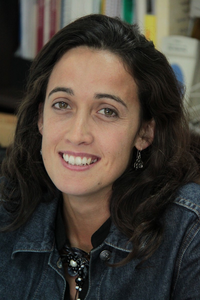Processing of interrogatives in European Portuguese
From HLT@INESC-ID
Date
- 15:00, May 15, 2009
- Room 336
Speaker
Abstract
The aim of our proposal is twofold: i) to automatically identify and model the interrogative structures in spontaneous speech and ii) to discuss the weight of the linguistic features that best describe these structures.
Different proposals have been made related to the relative weight of several approaches: statistical methods, morphosyntactic features, prosodic parameters or combinations of the previous. The interrogative structures in languages such as English have already been described in great detail, while for European Portuguese this issue is still in much discussion. Even for well-studied languages, one of today’s challenges is to model interrogatives in order to account for more natural human-machine interactions, in speech recognition, speech synthesis, dialogue and conversational agents, question answering, machine translation, etc.
We will focus our study on the identification of interrogatives in broadcast news. Surface rich transcriptions of this kind of data are crucial to make the automatic recognition output intelligible for hearing-impaired people. The idiosyncratic nature of broadcast news provides us with complex information where interrogatives may have different pragmatic functions: e.g., to conduct interviews, to seek for confirmation, to request for more detail information, to readdress the previous question, to change topics of conversation, and thus structuring discourse into units of semantic sense. As literature exploring the interface prosody/pragmatic shows, intonation plays a major role in the distinction of these pragmatic functions.
Morphosyntactic information is also a key factor, mainly due to the fact that languages have subtypes of interrogatives accordingly to the scope/focus of the constituent that is been asked. They may be /total/, when all the content of the utterance is been questioned; or /Wh-questions/, when a specific constituent, /e.g./, the subject, is the focus of interrogation. In European Portuguese these distinctions at the morphosyntactic level are accompanied by different prosodic contours as well.
